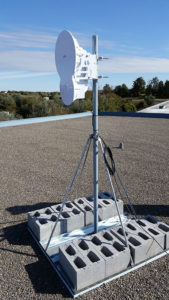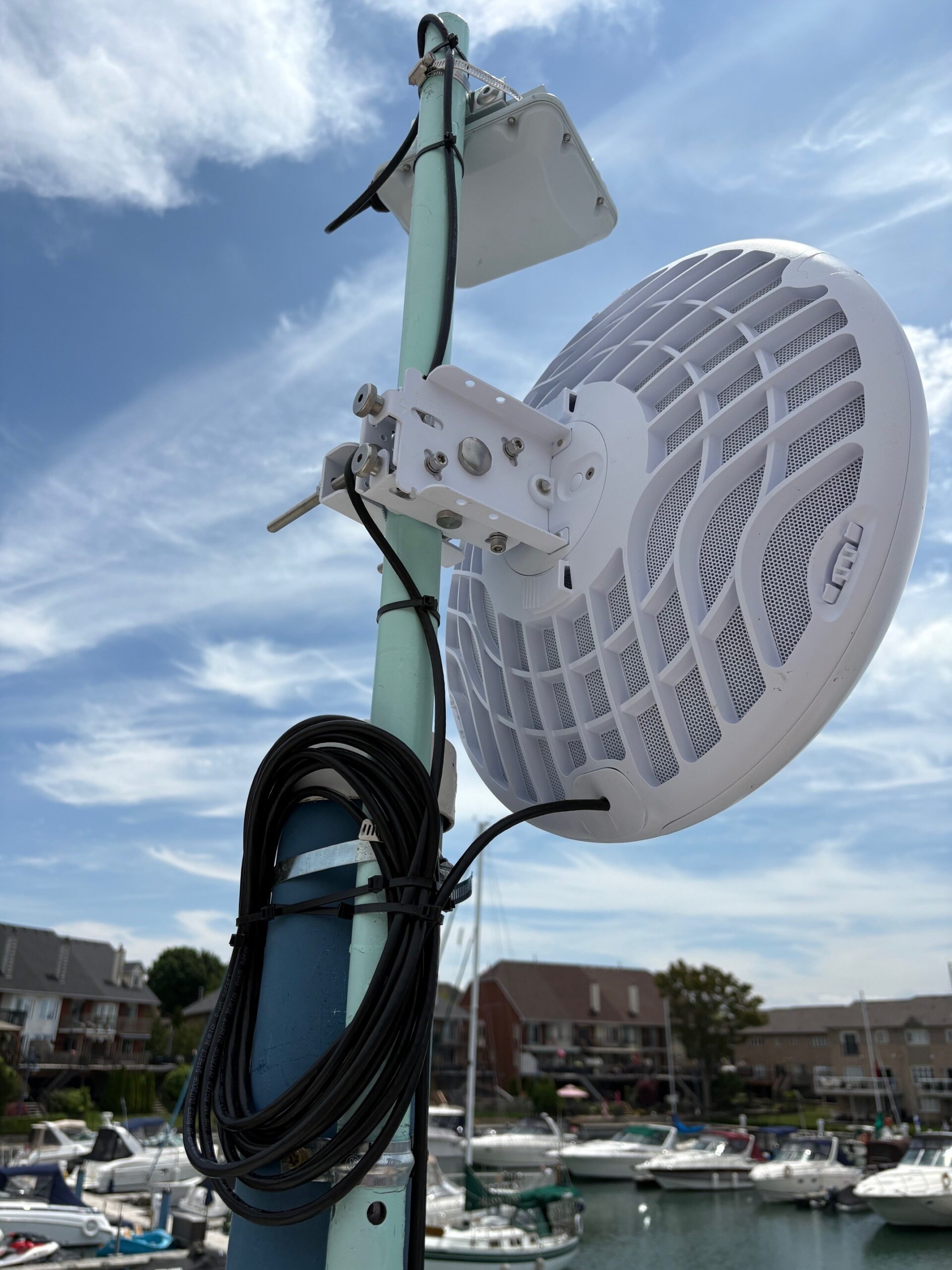When businesses start assessing ways to improve wireless connectivity across their property, one of the first questions that often comes up is: “Does this mean we’ll need to build a tower?”
The good news? In most cases, the answer is no.
Point-to-point wireless has become a cost-effective and proven way to extend network coverage between buildings or across large sites, without the need for expensive infrastructure or major construction. The key is understanding what point-to-point wireless is, when it’s useful, and how it can be installed using existing assets you likely already have on site.`
Understanding Point-to-Point Wireless
Point-to-point wireless is a dedicated link between two fixed locations. Instead of running fibre or copper cabling across long distances, a directional antenna transmits a strong, stable signal directly from one point to another.
This technology is particularly useful in situations where trenching fibre is cost-prohibitive or impractical. Some of the most common scenarios we see include:
- Connecting multiple buildings on the same property – for example, a main office linking to a warehouse or outbuilding.
- Linking remote areas back to the main network – such as docks at a marina or maintenance facilities set apart from the primary structure.
- Offloading traffic from a wireless mesh – ensuring performance isn’t degraded by too many hops between access points.
The benefits are significant:
- Cost savings: Avoid the thousands of dollars it can cost to trench and install fibre.
- Reliable performance: High bandwidth with low latency over long distances.
- Faster deployment: Wireless links can often be designed and installed much faster than wired alternatives.
Why Not Just Use a Wireless Mesh?
Wireless mesh networks certainly have their place, but they aren’t always the best fit. With a mesh setup, each hop between access points reduces the available bandwidth. Over a large property, this can quickly result in slow speeds, inconsistent performance, or frustrated end users.
A point-to-point link avoids that problem by creating a dedicated “express lane” between locations. For example, at marinas, using point-to-point wireless prevents the need to add expensive switching hardware out on docks, while still ensuring stable performance for boat owners and staff.
Do You Need a Tower?
Here’s where the question comes in. Many people assume that a point-to-point wireless link requires a tall, expensive tower. For most CORE projects, that’s not the case.
In fact, towers are generally avoided unless absolutely necessary. Instead, installations typically use:
- Existing rooftops fitted with non-penetrating masts.
- Custom mounts built to suit the conditions at each site.
- Wall penetrations or existing entry points to connect cabling into the network’s demarcation point.
So when would a tower be required? Only in rare situations such as:
- When there’s no line of sight available between locations using existing structures.
- When distances are extreme, and the only way to maintain a reliable signal is to elevate the antenna significantly.
Even in these scenarios, towers are the exception, not the rule. And if they are required, CORE works with trusted partners who specialize in tower construction and compliance.
Alternative Mounting Solutions
 There are a number of options for mounting antennas without resorting to towers:
There are a number of options for mounting antennas without resorting to towers:
- Non-penetrating rooftop masts with weighted bases that don’t damage the building structure. (image)
- Custom-fabricated mounts for poles and walls, designed to support heavier radios securely.
- Existing infrastructure such as utility poles or smaller masts already on site.
When evaluating options, we look at factors such as:
- How much height is needed to achieve line of sight.
- The weight and wind-load requirements of the equipment.
- Aesthetics and practicality, avoiding large, obtrusive installations that don’t fit the site.
Practical Realities Clients Should Know
At CORE, our first step is always to look at what’s already available on site before suggesting major construction. In many cases, we can achieve excellent results using existing rooftops or modest masts.
The costs are often much lower than clients expect, especially when compared with running new fibre between buildings. The technology is proven, reliable, and has been successfully deployed in commercial, industrial, and even challenging outdoor environments.
It’s important to note that performance isn’t simply about height or equipment. Good design and professional installation make all the difference in ensuring your network runs as intended.
Avoiding Misunderstandings
Another area where expectations sometimes need to be managed is around end-user devices. Not all connectivity issues are related to the network itself. Poor-quality laptops, tablets, or phones with weak internal antennas may struggle to connect even when the network is working properly.
In those cases, the problem isn’t with the wireless link, it’s with the device. CORE’s role is to design and install the infrastructure that delivers robust connectivity. Troubleshooting or replacing subpar devices falls outside of that scope.
Part of our process is education, making sure clients understand what point-to-point wireless can do, where it makes sense, and where other issues might be the root cause of user complaints.
If your organization is looking to improve connectivity between buildings or across your property, point-to-point wireless may be the solution you’ve been searching for.
In most cases, it doesn’t require towers or major construction. It simply requires the right design, the right equipment, and an experienced partner who knows how to make it work.
Contact CORE Cabling today to schedule a site evaluation. We’ll assess your needs, review existing infrastructure, and determine whether a tower-free solution can extend your network reliably and cost-effectively.



